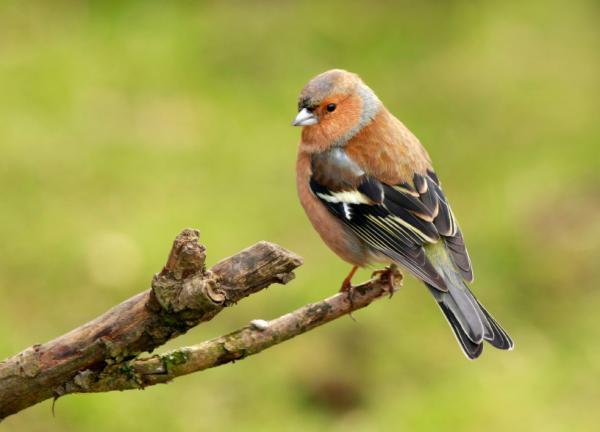Since we were talking about “Birding by Ear” I thought you might be interested in this article from Science Daily on a new technology to facilitate bird population surveys. I think you will find it quite interesting.

Chaffinch photo by Andrew Howe
ScienceDaily (July 28, 2008) — Switch on the mike, start the recording, the stage is set for the local fauna!
Computer scientists from the University of Bonn, in conjunction with the birdsong archives of Berlin’s Humboldt University, have developed a kind of ‘Big Brother’ for birds. This has nothing to do with entertainment, but a lot to do with the protection of nature. The new type of voice detector involved can reliably recognise the characteristic birdsong of different species of birds, thereby facilitating surveys of the bird population.
Europe’s forests are falling silent as countless species of birds go on the red list of endangered species. Yet in fact no-one can say what the exact position is with some species. So as to have a reliable count of the territories of indigenous birds it would practically be necessary to send out a whole horde of spare-time ornithologists to count the birds.
What is more, since the birds are often hidden in the undergrowth or the tree tops, ornithologists need to rely on their ears and their specialist knowledge. This means that in many areas it is wellnigh impossible to map the bird population comprehensively and continuously.
In view of such problems environmental protection has to fall back on new technical methods. Some of these are now being provided by Bonn scientists. Computer scientists from the University of Bonn have developed detectors which can recognise birdsong automatically. What this implies is that in the preliminary stage microphones are placed at selected points in the wild; these record all the sounds made, in some cases over a period of months. The new computer software can then sift through the many hundreds of hours of recorded material overnight and say how many birds of which species have been singing and how often they have been doing this.
In his project Daniel Wolff of the Institute of Computer Science at the University of Bonn initially concentrated on the bio-acoustic recognition of the Savi’s warbler and the chaffinch. He listened carefully to the various types of birdsong, scrutinised them in a spectrogram and transferred the characteristics to algorithms. As soon as specific parameters are met, the programme kicks in. ‘For example, the signal of the Savi’s warbler has a mean frequency of 4 kHz, which is very typical. If, in addition, individual elements of the signal are repeated at a frequency of 50 Hz, this is detected as the call of a Savi’s warbler,’ Daniel explains. The chaffinch detector also analyses periodic repetitions of elements like these. In doing so it reveals more of a typical verse structure than the pitch of the chaffinch’s song.
The Savi’s warbler detector, particularly, which was subjected to long-term monitoring at Brandenburg’s Parsteiner Weiher, is characterised by what researchers call ‘robust recognition’, i.e. a high degree of reliability. Despite interference from rain, wind and amphibians the programme recognised, with a 92% detection accuracy, the song of a species of bird which is still found on the shores of the Baltic but which has become rare elsewhere in Europe.
The birdsong detectors are as yet only calibrated for the birdsong of individual species. However, in the near future, Daniel Wulff thinks, it will be possible to link them up to a kind of superdetector which can recognise as many species as possible and, in combination with GPS coordinates, will make the mapping of bird populations simpler and more efficient.
The research field of bio-acoustics, he adds, is currently experiencing a boom. Although it was in the 1970s that the first attempts were made ‘to detect the chaffinch with much slower computers,’ Daniel says, with a nostalgic smile, ‘what is decisive is that it’s only now that we are in a position to store a large amount of recorded sound and place compact technology in nature which can really run for months, e.g. with solar energy.’
Adapted from materials provided by Bonn, Universitaet, via AlphaGalileo.
Bonn, Universitaet (2008, July 28). Birdsong Not Just For The Birds: Bio-acoustic Method Also Hears Nature’s Cry For Help. ScienceDaily. Retrieved July 28, 2008, from http://www.sciencedaily.com:80 /releases/2008/07/080728081631.htm









Comments on this entry are closed.
That is interesting indeed! That would be great to have such a device. Add to it a life sign detector and you can actually find them! Something I am really bad at! 🙂
Good point Klaus! But if all we had to do was plug in our GPS coordinates, wait for the life sign detector to go off, and head over to the location where the birds are, wouldn’t we miss all the good “stuff” on the journey?
It is tempting to imagine not spending hours looking for a species that you end up never seeing though huh? I consider myself lucky if I see the birds I can hear sometimes!